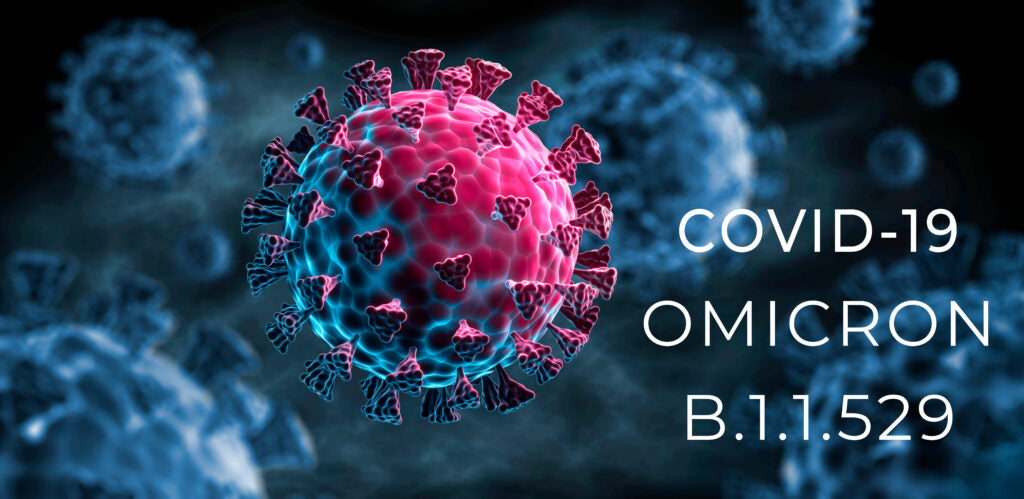1. Discovery and identification
The Omicron variant was first discovered and identified in South Africa in November 2021. It was officially classified as a variant of interest by the World Health Organization (WHO) on November 26, 2021, and subsequently designated as a Variant of Concern (VOC).
The Omicron variant was identified through continuous monitoring of variants of the SARS-CoV-2 virus, which was conducted through genome sequencing of the virus obtained from samples of COVID-19 positive patients. This epidemiological monitoring was carried out worldwide to identify virus mutations that may impact its transmissibility, severity, and resistance to prevention and treatment measures.
Once identified, the Omicron variant underwent thorough analysis to determine its characteristics and potential impact on public health. These analyses involved laboratory studies to assess immune response, transmissibility, and susceptibility to neutralization by antibodies generated from vaccines and previous infections.
The rapid spread of the Omicron variant has raised global concerns, leading to a coordinated response by international health authorities to closely monitor the variant’s spread and implement measures to limit its spread and mitigate its impacts on public health.
2. Distinctive characteristics
The Omicron variant exhibits several distinctive characteristics that make it unique compared to other variants of the SARS-CoV-2 virus. Some of its most relevant characteristics include:
• High number of mutations: the Omicron variant has a high number of mutations in its genome, with over 50 mutations identified so far. This makes it one of the variants with the highest number of mutations identified to date
• Spike protein mutations: among the mutations present in the Omicron variant, many are found in the spike protein region of the virus. The spike protein is important because it allows the virus to enter human cells, and mutations in this region can influence the virus’s transmissibility and ability to evade the immune system
• Mutations of interest: some of the mutations present in the Omicron variant are of particular interest because they have been associated with potential increased transmissibility or possible resistance to antibodies generated from previous infections or vaccines
• Impact on immune response: some preliminary evidence suggests that the Omicron variant may be able to partially evade the immune response induced by vaccines and previous infections. However, further studies are needed to fully understand the impact of these mutations on immune response and the effectiveness of current vaccination strategies.
3. Global spread
The global spread of the Omicron variant of the SARS-CoV-2 virus has marked a new chapter in the fight against the COVID-19 pandemic. Since it was first identified in South Africa in November 2021, the Omicron variant has rapidly crossed national borders, spreading to many other nations worldwide. Its community transmission has led to an exponential increase in confirmed cases in several countries, prompting health authorities to adopt emergency measures to contain its spread.
This rapid global spread of the Omicron variant has raised significant concerns about its transmissibility and its ability to evade immune response, questioning the effectiveness of current pandemic control strategies. Changes in travel policies, with many countries introducing or strengthening travel restrictions to contain the spread of the variant, have highlighted the need for a coordinated international response to address the pandemic.
This global spread has also underscored the importance of continuous surveillance and cooperation between countries to monitor and contain the spread of the virus. While researchers continue to study the Omicron variant to fully understand its characteristics and impacts on public health, global response remains crucial to mitigate the effects of the pandemic and protect the health and well-being of communities worldwide.
4. Risks and uncertainties
Some of the main risks and uncertainties associated with the Omicron variant include:
• Transmissibility: one of the main risks associated with the Omicron variant is its transmissibility. While data collection and analysis are ongoing to determine if it is more transmissible than other variants, its rapid spread across different regions of the world raises concerns about its potential ability to transmit more easily
• Disease Severity: another uncertainty concerns the severity of the disease caused by the Omicron variant. It is important to understand whether this variant will cause more severe forms of COVID-19 than previous variants or if it will have different symptoms
• immune evasion: the Omicron variant has shown a high number of mutations in the spike protein region, which is important for the virus to enter human cells and for immune response. These mutations raise concerns about the Omicron variant’s ability to evade immune response induced by vaccines and previous infections
• Vaccine efficacy: the rapid spread of the Omicron variant has raised questions about the ability of existing vaccines to protect against this new variant
• Impact on control measures: the emergence of the Omicron variant has raised questions about current pandemic control strategies, including social distancing measures, lockdowns, and travel restrictions. It is important to assess the effectiveness of these measures in containing the spread of the Omicron variant and adapt them accordingly
• Impact on healthcare services: the increase in COVID-19 cases caused by the Omicron variant could strain healthcare services, especially in areas with high transmission rates. It is important to assess the capacity of healthcare systems to cope with an increase in cases and take preventive measures to protect healthcare workers and ensure adequate patient care.
5. Impact on vaccines
The impact of the Omicron variant on COVID-19 vaccines is a topic of great interest and concern worldwide. The rapid spread of Omicron has raised questions about the effectiveness of existing vaccines in providing protection against this new variant of the virus.
Currently, available data indicate that there may be a reduction in the effectiveness of vaccines against Omicron infection compared to previous variants of the virus. However, it is important to emphasize that vaccines continue to offer significant protection against severe illness, hospitalization, and death.
Faced with this new challenge, the scientific community and health authorities are working tirelessly to assess the effectiveness of existing vaccines against Omicron and to develop any updates or modifications to vaccines that may enhance their ability to protect against this emerging variant.
At the same time, vaccination strategies are being reviewed and adapted to address the spread of Omicron. This may include the introduction of booster doses to bolster immune protection, accelerating mass vaccination programs, and evaluating new vaccination strategies to specifically address the new variants.
It is essential to maintain an evidence-based approach and international collaboration to address the impact of Omicron on vaccines and to protect public health. Continuous research, epidemiological surveillance, and equitable vaccine distribution remain crucial pillars in the fight against the pandemic as we adapt and respond to the challenges posed by new variants like Omicron.
6. Health response and management strategies
Faced with the spread of the Omicron variant, Health Authorities worldwide have implemented a series of management and response strategies to effectively address the situation. These strategies include a combination of monitoring and surveillance, testing and contact tracing, vaccination, social distancing measures, support for healthcare services, and public communication.
Firstly, there has been an intensification of monitoring and surveillance programs to better understand the spread of the Omicron variant. This includes genetic sequencing of virus samples to identify circulating variants and collecting epidemiological data to monitor transmission patterns.
Diagnostic testing and contact tracing have been strengthened to quickly identify Omicron cases and disrupt transmission chains. Testing campaigns have been expanded, and individuals identified as close contacts of positive cases are promptly isolated and tested to prevent further spread.
Vaccination remains a fundamental part of the Omicron variant management strategy. Health Authorities are actively promoting vaccination and offering booster doses to increase immune protection, especially among the most vulnerable individuals.
Concurrently, social distancing measures, such as mask-wearing, maintaining physical distance, and remote work, have been reinforced to reduce virus transmission.
Lastly, public communication plays a crucial role in providing accurate information about the Omicron variant, prevention measures, and available resources. Clear and transparent communication is essential to increase public awareness and promote safe behaviors.



Share:
Influenza virus: understanding the different strains